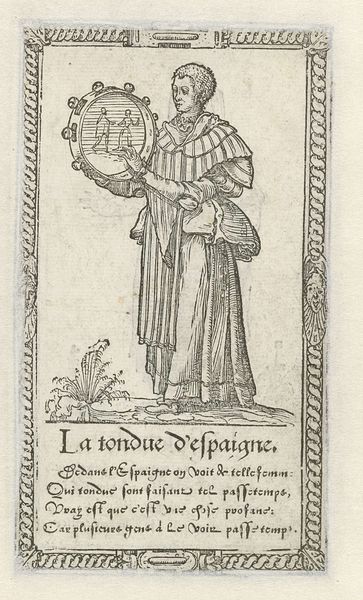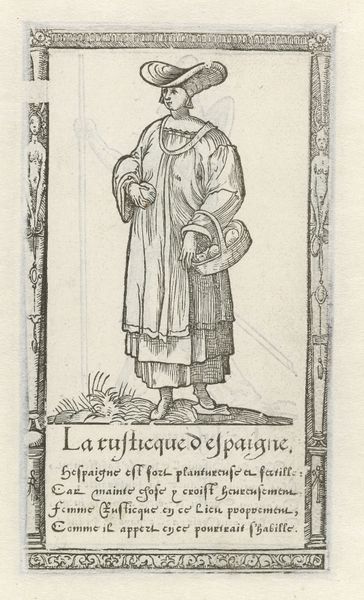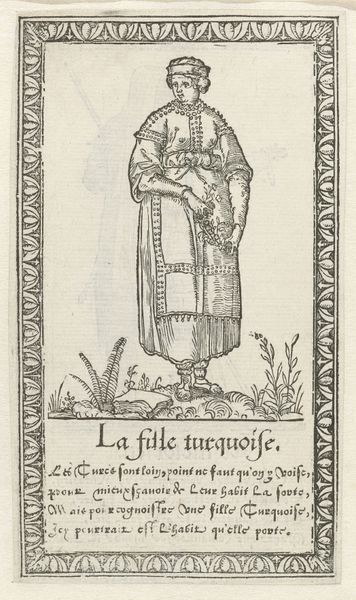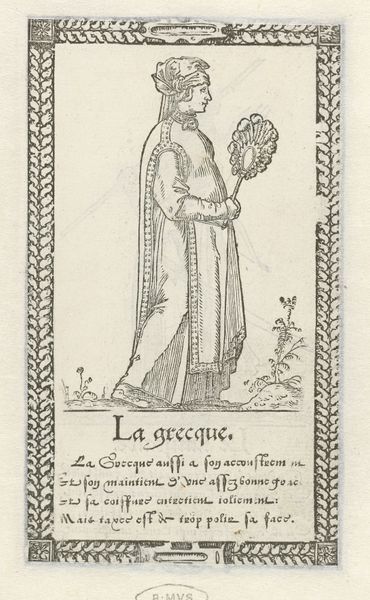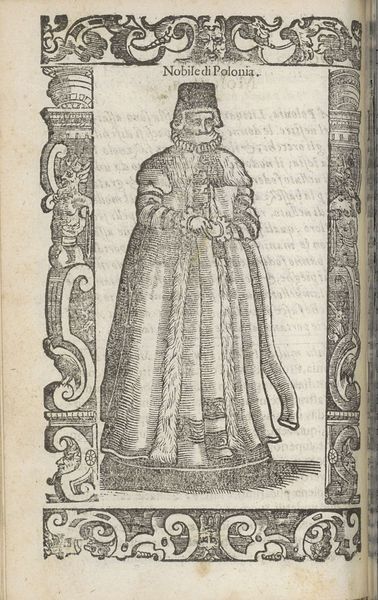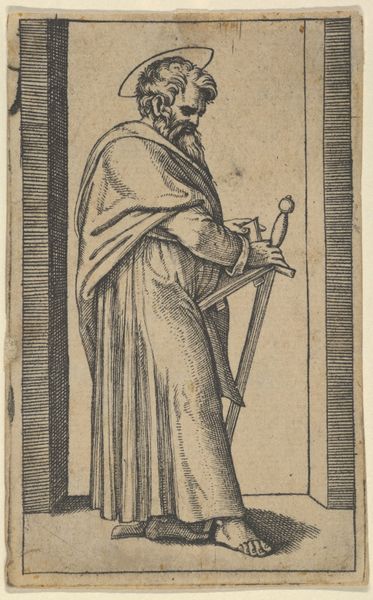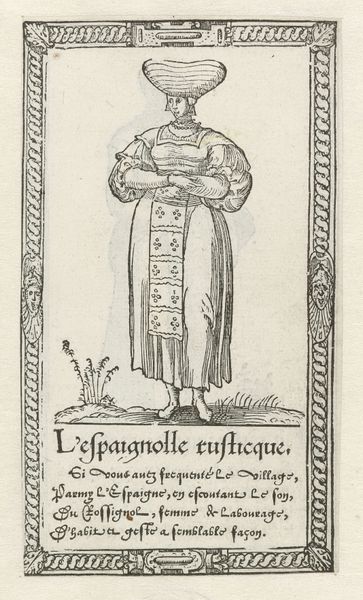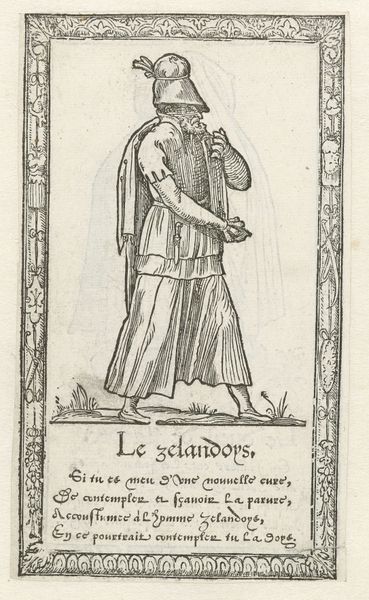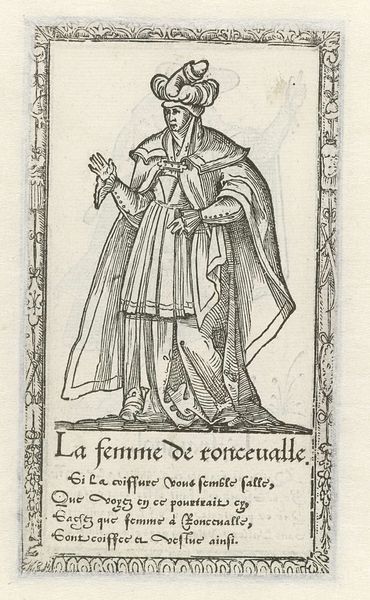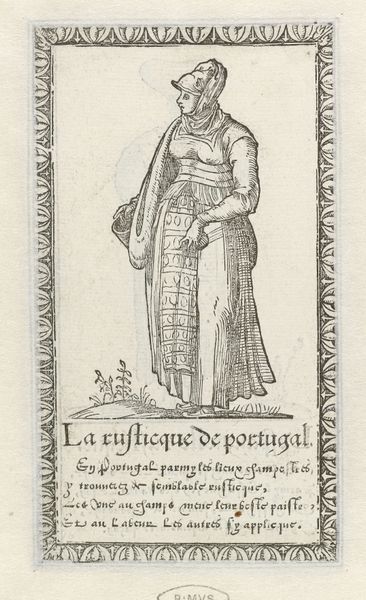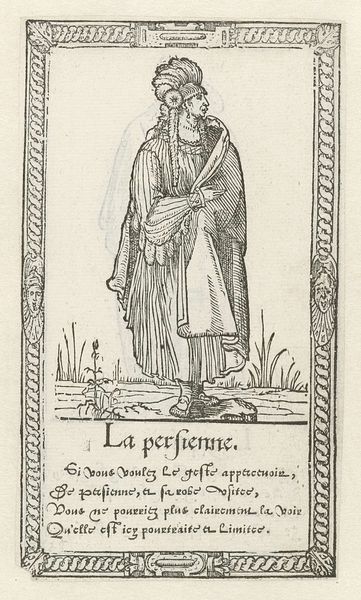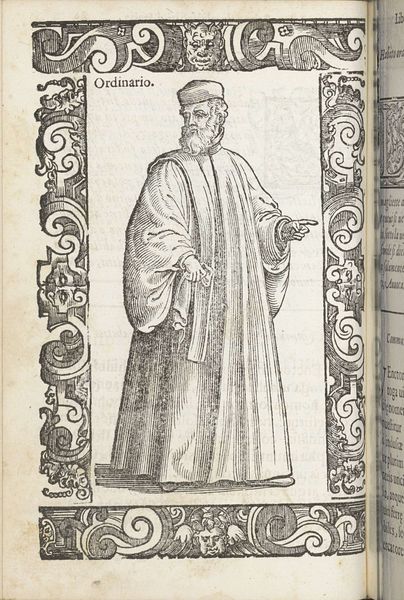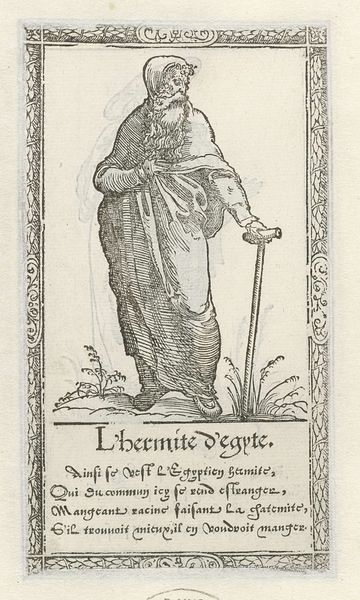
drawing, print, ink, engraving
#
portrait
#
drawing
# print
#
pen illustration
#
old engraving style
#
figuration
#
11_renaissance
#
ink
#
engraving
Dimensions: height 145 mm, width 84 mm
Copyright: Rijks Museum: Open Domain
Curator: This image certainly has presence. What catches your eye first? Editor: It's undeniably the figure himself, but not in an individual way. I’m drawn to the stark simplicity, and the deliberate composition creating a hieratic effect. The figure appears immobile, self-contained, timeless. Curator: That's a fitting observation, considering that this is François Desprez's "Priester uit Egypte," or "Egyptian Priest," dating back to 1562. Desprez, a master of printmaking, employed engraving and ink in this work. Let's consider the implications of choosing printmaking in Renaissance depictions of religious figures. It enabled the wide dissemination of images, effectively democratizing representation. Editor: Indeed. And if we break it down formally, there is an almost naive symmetry: note how the lines both define and flatten him. He's more concept than man. This flatness contrasts against the frame and border. What purpose does this serve? Curator: Perhaps this alludes to the mass production of images versus handcrafted artistic details, an interesting commentary. Look closer at his costume, for instance, how do these printed robes connect to actual practices of priestly craft? It’s a reflection on how religious image making at the time could generate meaning in many households. Editor: And there are some deliberate choices like the beard. The figure’s beard isn't merely facial hair; it is the core symbolic anchor, a symbol for all Egyptian Priests. It’s practically another item of clothing, signifying tradition and religious lineage, more than individuality. Curator: This image isn't simply presenting us with a historical figure. Desprez's choices elevate the priest to an allegorical symbol. He captures the complexities of power, craft, and tradition inherent in religious imagery. This small engraving, intended for the masses, prompts deeper contemplation. Editor: Yes. This figure isn't meant to represent any real person, but religious devotion through materiality, line and symbolism. The artwork exists more like a window onto an abstract idea of what we are to see, rather than at all representing what we do. Curator: The social conditions of art-making are not often made so plain, even today. The layering of Desprez's practice, as shown, allows for the examination of larger issues, in accessible ways. Editor: A modest picture which makes up for size with considerable depth of subject!
Comments
No comments
Be the first to comment and join the conversation on the ultimate creative platform.
